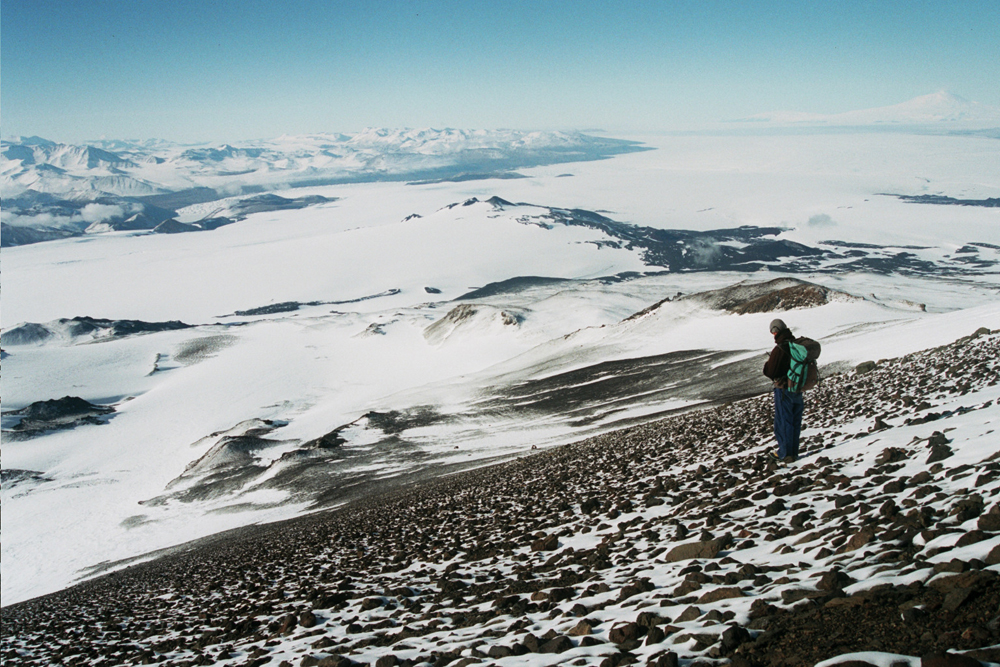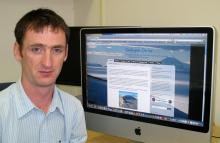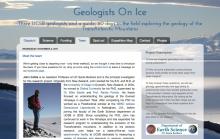


Thanks to John Cottle, people who enjoy reading about science online are about to get a feel for what research is like in Antarctica, as it's happening.
Cottle, an assistant professor of earth science at UC Santa Barbara, spends several months each year in the mountains of Asia and Antarctica. On November 17, he and his research team of UCSB graduate students will leave for a two-month expedition in the TransAntarctic Mountains. Only this time, Cottle and the other researchers will be providing information about their scientific explorations via a blog he's created just for this trip.
Cottle, who also does extensive research in the Himalayas, sees the blog as a chance to provide insight into what he's doing as a scientist, as well as how he's doing it.
"When I talk to friends in Santa Barbara about my Himalayan research, people are interested in it, but I don't think they can relate to what I'm doing," Cottle said. "When I talk to them about Antarctica, there's an inherent curiosity about what happens when you go down there. What is it like? I really wanted to use this as a mechanism to increase people's understanding of what we do when we go down there."
He will be using a satellite phone, laptop, and other handheld mobile devices to blog at least two or three times per week, he said, adding that blogging from Antarctica will be somewhat easier than if he were to try to do it from the Himalayas.
"You spend about one out of every five days in a tent in Antarctica because of the weather," Cottle said. "That will give us down time to update the blog. In the Himalayas it would be difficult because you're working all the time. This will give us reasonable time to do updates."
It is possible to post from such a remote location. Cottle tested it successfully during his trip to Tibet in August, though none of the blog items were made public. "I also just learned that I can set up a phone number that I can call from the satellite phone and leave a voicemail message that will be published to the blog," he said. "So even if I can't get a connection with the computer, I can still post voice messages to the blog via that number."
Cottle sees the blog serving two purposes. "One would be the science –– what we see in the field, what we're looking for, and what the results are," he said. "The other is how we go about doing field work in Antarctica –– the clothing, the weather, what you eat, what kind of tent you're sleeping in, how you get around –– that kind of thing. I just really want to give people a picture of what it's like to do science in Antarctica."
He and his researchers will have no problem finding enough daylight to post their photos, text updates, and voice messages. The last sunset in Antarctica was on October 23, and the next sunset won't come until the end of February. "Complete daylight," Cottle said. "But it's still cold. At the end of the season it does get slightly above freezing and the ice breaks up, but it's usually around minus 15 degrees Celsius (5 degrees Fahrenheit) where we'll be staying and working, although I have experienced temperatures as cold as minus 30 degrees Celsius and wind chill in this region."
Cottle's research team will be focusing on the dynamics of rocks found in a subduction zone preserved in the TransAntarctic Mountains. While this mountain range was uplifted relatively recently, the rocks are very old –– between 400 million and 600 million years old. "You can think of them as being the roots of an ancient subduction zone," Cottle said.
However, in one 200-kilometer-long section of the TransAntarctic Mountains, there is a sequence of rocks that scientists have previously thought were formed at about the same time. "But if you look at the chemistry of those rocks, they're aren't the kind of rocks that we normally associate with the subduction process," Cottle said. "So the question is: Why are those rocks there, how did they form, and what can this tell us about modern and ancient subduction systems? At present, we just haven't come up with a good model to explain the existence of these rocks."
The blog (http://www.antarctica360.net/) is already online with posts about the team members, how they plan to communicate with the outside world, and other information about their preparations. Keep reading, and you just might learn more about the mystery of those TransAntarctic rocks.
Related Links



